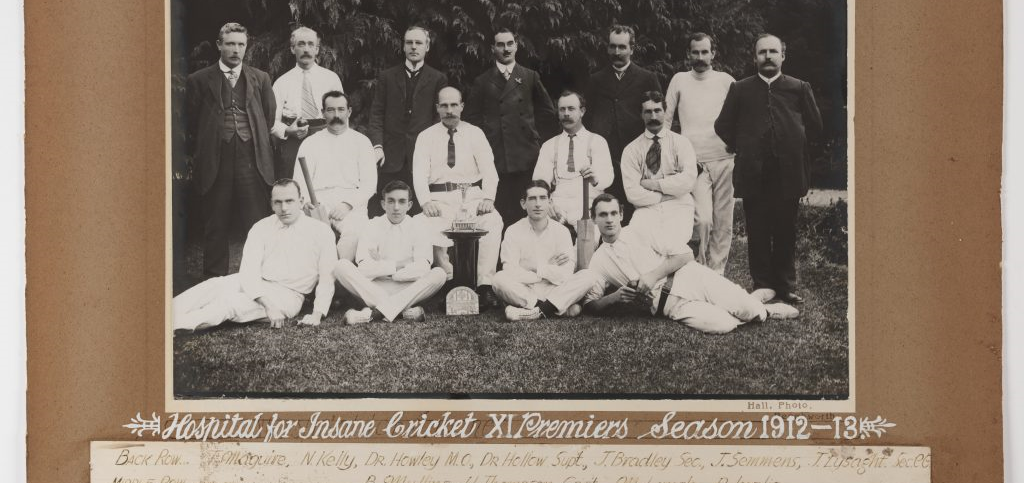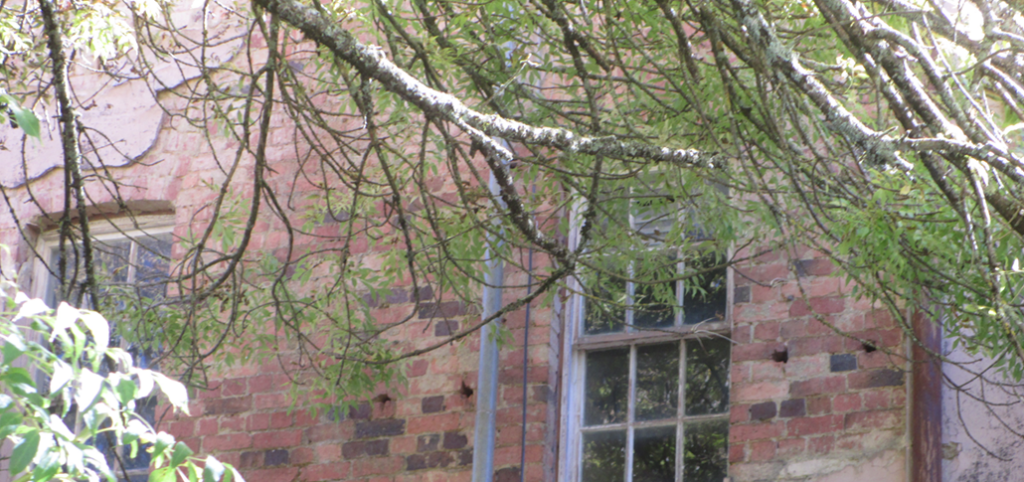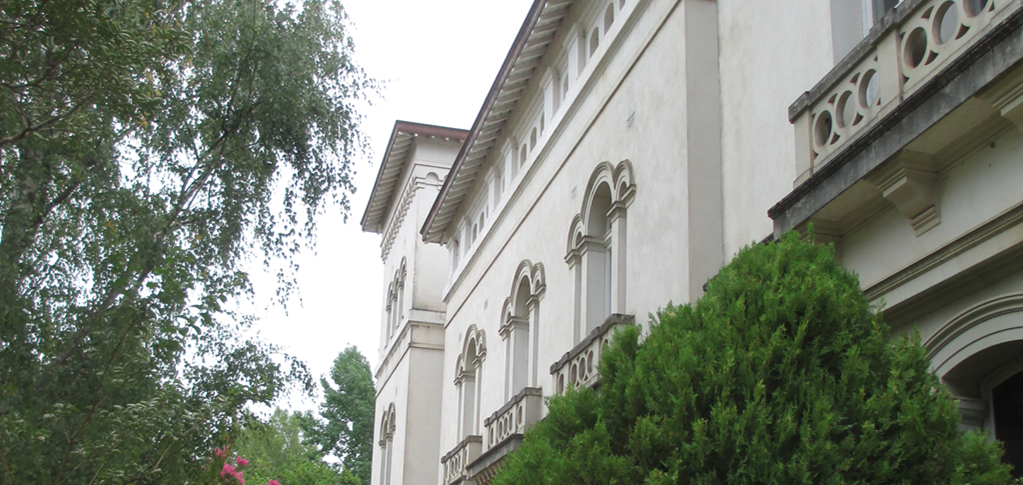James Neilson BRADLEY (1868–1943)
James BRADLEY was born in Sandhurst (Bendigo), one of seven children of William BRADLEY and Jane NEILSON. In 1892 he married Ida Emily SCOPES and they had three children, all born in Beechworth. He had a short spell working as a clerk in Melbourne before being appointed Manager of Beechworth asylum in 1911, a position he held until 1918 when he moved to Melbourne to work at the Mont Park asylum. He died in Ivanhoe, a northern suburb of Melbourne.
While in Beechworth, James BRADLEY was heavily involved in community activities. He was Vice-President of the Asylum cricket club, Vice-President of the Alpine tennis club formed at the asylum in 1912, and in 1915 he was elected to the committee of the Beechworth Bowling Club. He was on the council of the Beechworth Technical School, he worked to encourage men to enlist to serve in World War 1 and was Secretary of a group collecting clothing to support the war effort.
Victor Townsend BRADLEY (1897–1955)
Victor BRADLEY was the youngest child of James BRADLEY. He was born in Beechworth and the family would have lived in the manager’s house within the asylum grounds. It is not known whether he worked in a junior position at the asylum, but by 1919 he was living at Middle Park in Melbourne and working as a clerk. In 1921 he married Lilian Agnes STANLEY, but it is not known whether they had children. He lived in Melbourne for the rest of his life, mostly in West Brunswick. At the time of his death, he was described as a bank manager.
Victor BRADLEY was an important member of the Asylum cricket team in 1912–13 and 1913–14, when it won the Beechworth Cricket Association championship. He was selected to play in a Beechworth Cricket Association team in 1914. He also enjoyed tennis and played for the Alpine tennis club.
Daniel Albert GALLIVAN (1894–1917)
Daniel GALLIVAN was born in London, England, to Daniel and Elizabeth Jane GALLIVAN. His father was born in Ireland and was a sergeant with the Metropolitan Police. Daniel had four older sisters. He worked as a telegraph messenger for the General Post Office in London and came to Australia in 1912 or 1913, securing a position as a clerk at the Beechworth asylum in 1914. He enlisted in the AIF in 1915, service number 1414 in the 19th Infantry Battalion. He served at Gallipoli and on the Western Front and was killed in action on 07 October 1917. He is commemorated on the Ypres Menin Gate Memorial.
During his short time in Beechworth Daniel took part in many activities. He participated in Fancy Dress Balls, he played percussion in the asylum orchestra and performed in a comedy sketch at a fund-raising concert for St Joseph’s Church. As well as playing cricket for the Asylum team, he played tennis for the Alpine club and was a member of Beechworth Rifle Club.
Bryan MULLINS (1880–1946)
Bryan MULLINS was born in Beechworth to Bernard MULLINS and Jane OWENS. He was one of six children. In 1903 he married Amy Elizabeth COLE and in 1904 they had twin girls, Una Mary and Olive Ethel. Bryan worked in Beechworth at the tannery and in 1908 he joined the staff of the asylum, working as an attendant and providing day-to-day care to the male patients. In 1915 he was transferred to the Ararat asylum, and he was moved again in 1919 to Kew asylum in Melbourne, where he remained for the rest of his working life. He died in Kew and was buried in the Box Hill Cemetery.
He was the secretary of the Asylum cricket club in 1913–14 and played in seasons 1912–13 and 1913–14. He was a member of the ANA Friendly Society and took part in their regular card evenings against other Lodges.
James Henry SEMMENS (1885–1963)
James SEMMENS was born in Bealiba, Central Victoria to Peter SEMMENS and Elizabeth STEPHENS. The family moved to Silver Creek, near Beechworth, and in 1910 James joined the asylum staff as an attendant. He married a nurse, Jessie McLEAN, in 1911 and they had three children. In 1915 he was transferred to Melbourne, working in different asylums until being made chief attendant at the Repatriation Mental Hospital in Bundoora. On his retirement, he moved to Bethanga in north-east Victoria, and he died in Albury, NSW, in 1963.
James SEMMENS enlisted in the AIF in 1918, joining the 6th Battalion with service number 61213. He served in France before returning to Australia in 1919.
While in Beechworth, James SEMMENS played a few matches for the Asylum cricket team. He was a member of the Rechabite Lodge and played in their regular card evenings against other Lodges.
Richard John SEMMENS (1889–1975)
Richard SEMMENS was the younger brother of James. He was born in Brunswick in Melbourne and joined the Beechworth asylum staff as an attendant in about 1910. Like his brother, he married a nurse, Linda ELLIS, in 1911 and they had five children. Richard enlisted in the AIF in 1915, joining the 1st Remount Unit, No. 2 Squadron, service number 448. He served in Egypt and returned to Australia in 1918, resuming duties at the Beechworth asylum. In the early 1940s he was moved to Ararat to become Head Attendant at the Mental Hospital. He remained in Ararat after his retirement and was buried in Ararat Cemetery.
Richard played in several cricket matches for the Asylum team between 1911 and 1914. He was a member of the Fire Brigade and the Rechabite Lodge, and after the War he served on the Board of the Ovens and Murray Home for the Aged in Beechworth.
Henry Tidyman THOMPSON (1872–1857)
Henry THOMPSON was born in Beechworth to Walker THOMPSON and Mary TIDYMAN. By 1909, he was working as an attendant at the asylum and in that year, he married a nurse, Hilda TIVENDALE. They had three children. In 1922, Henry became a storeman at the Beechworth asylum, and in 1928, transferred to a similar position at Kew asylum in Melbourne. He died in Beaumaris in 1957 and was buried in the Cheltenham cemetery.
Henry THOMPSON was an all-round sportsman. He was Captain of the Asylum cricket team for several years, Secretary of the club in 1912–13, and in 1911 was elected President of the newly formed Beechworth Cricket Association. He served with the Beechworth Fire Brigade until 1910, and in that year also he was presented with a gold medal to mark his 22 years as a player with the Beechworth Football Club. He joined the Beechworth Bowling Club in 1915.
Written by Dr Eileen Clark, Adjunct Research Fellow at Charles Sturt University.
See Eileen’s full bio here
Further research on the Beechworth Cricket team:
Citation: Clark, Eileen, Munday, J & Watts, A. 2021. Cricket and the Beechworth Asylum, 1910–1915: A Collective Biography. Journal of Sociology. https://doi.org/10.1177/14407833211048242


